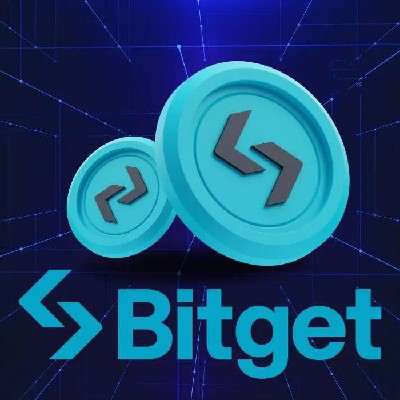


Cena APENFTNFT
Konwerter NFT na PLN
Jakie jest Twoje dzisiejsze nastawienie do APENFT?
Informacje o APENFT (NFT)
Sure, here's a brief and informative article about APENFT in Polish (Polish):
APENFT jest innowacyjnym projektem z dziedziny kryptowalut, który zyskał znaczną popularność w ostatnim czasie. Jest to unikalna kryptowaluta, znana również jako NFT, co oznacza "niepowtarzalny token" (ang. Non-Fungible Token). APENFT stanowi rewolucję w digitalizacji i handlu dziełami sztuki cyfrowej.
APENFT zostało stworzone jako platforma oparta na technologii blockchain, która umożliwia twórcom, artystom i kolekcjonerom z całego świata handlowanie i kolekcjonowanie cyfrowych dzieł sztuki. Jest to możliwe dzięki zastosowaniu technologii NFT, która nadaje każdemu cyfrowemu dziełu sztuki unikalne i niepowtarzalne cechy.
Blockchain, na którym opiera się APENFT, gwarantuje bezpieczeństwo, przejrzystość i niezmienną historię transakcji digitalnych dzieł sztuki. Dzięki temu platforma ta staje się bezpiecznym miejscem dla kolekcjonerów i twórców sztuki do handlu i przechowywania dzieł sztuki cyfrowej.
Interesującą cechą APENFT jest, że platforma nie tylko umożliwia handel dziełami sztuki cyfrowej, ale także angażuje społeczność w proces tworzenia kolekcji. Twórcy mogą przekazywać swoje dzieła do cyfrowej kolekcji APENFT, co przyczynia się do powiększania ekosystemu i skarbca cyfrowych dzieł sztuki.
Kolekcjonerzy cenią APENFT jako platformę, która umożliwia im otrzymanie prawdziwie unikalnych dzieł sztuki cyfrowej, które są trudne do skopiowania lub podrobienia. To otwiera nowe możliwości dla artystów, którzy mogą sprzedawać swoje oryginalne dzieła i uzyskiwać za nie wartość rynkową.
APENFT wykorzystuje własną kryptowalutę o nazwie NFT, która jest ważna dla handlu i płatności na platformie. Kryptowaluta ta umożliwia szybkie i bezpieczne transakcje, niezależnie od tego, gdzie znajdują się użytkownicy na całym świecie.
Wniosek
APENFT to innowacyjny projekt kryptowalutowy, który umożliwia handel i kolekcjonowanie cyfrowych dzieł sztuki. Opierając się na technologii blockchain i wykorzystując NFT, APENFT stworzył niepowtarzalną platformę dla artystów, twórców i kolekcjonerów. Dzięki unikalnym cechom i zaawansowanej technologii, APENFT zdobywa coraz większe zainteresowanie w świecie kryptowalut.
Raport z analizy AI na temat APENFT
Cena APENFT w PLN dzisiaj
Historia cen APENFT (PLN)
 Najniższa cena
Najniższa cena Najwyższa cena
Najwyższa cena 
Jaka jest najwyższa cena APENFT?
Jaka jest najniższa cena APENFT?
Prognoza ceny APENFT
Kiedy jest dobry moment na zakup NFT? Czy zalecane jest teraz kupno lub sprzedaż NFT?
Jaka będzie cena NFT w 2026?
Jaka będzie cena NFT w 2031?
Często zadawane pytania
Jakie czynniki wpływają na cenę APENFT?
Jak często zmienia się cena APENFT?
Jakie są aktualne prognozy cenowe dla APENFT?
Jak mogę kupić APENFT?
Dlaczego cena APENFT jest tak zmienna?
Czy APENFT może osiągnąć nowy najwyższy poziom cenowy?
Jak APENFT wypada w porównaniu do innych monet związanych z NFT pod względem wyników cenowych?
Jaki był historyczny trend cenowy APENFT?
Jak mogę śledzić ruchy cenowe APENFT?
Jakie są ryzyka związane z inwestowaniem w APENFT?
Jaka jest obecna cena APENFT?
Czym jest 24-godzinny wolumen obrotu APENFT?
Jaka jest najwyższa dotychczasowa wartość APENFT?
Czy mogę kupić APENFT na Bitget?
Czy mogę uzyskać stały dochód z inwestycji w APENFT?
Gdzie mogę kupić APENFT z najniższą opłatą?
Aktualności związane z APENFT
Rynek APENFT
Posiadane APENFT
Matryca dystrybucji posiadanych APENFT
Posiadane APENFT według koncentracji
Adresy APENFT według czasu posiadania

Globalne ceny APENFT
- 1
- 2
- 3
- 4
- 5
Jak kupić APENFT(NFT)

Utwórz darmowe konto Bitget

Zweryfikuj swoje konto

Konwertuj APENFT na NFT
Dołącz do copy tradingu NFT, obserwując wybitnych traderów.
Nowe notowania na Bitget
Kup więcej
Gdzie mogę kupić APENFT (NFT)?
Sekcja wideo — szybka weryfikacja, szybki handel

Konwerter NFT na PLN
Oceny APENFT
Bitget Insights




Powiązane aktywa
Dodatkowe informacje na temat APENFT
Omówienie monety
O monecie
Informacje handlowe
Aktualizacje monety
Handluj
Earn
NFT/USDT
Spot

































Dane z mediów społecznościowych dot. APENFT
W ciągu ostatnich 24 godzin wynik sentymentu mediów społecznościowych wobec APENFT wynosił 3, a sentyment mediów społecznościowych do trendu cenowego APENFT wynosił Byczy. Ogólny wynik APENFT w mediach społecznościowych wyniósł 0, co plasuje go na 1282. miejscu wśród wszystkich kryptowalut.
Według LunarCrush, w ciągu ostatnich 24 godzin kryptowaluty zostały wspomniane w mediach społecznościowych łącznie 1,058,120 razy, przy czym APENFT był wspominany ze współczynnikiem częstotliwości 0%, zajmując 1173. miejsce wśród wszystkich kryptowalut.
W ciągu ostatnich 24 godzin było łącznie 50 użytkowników dyskutujących o APENFT, z łączną liczbą APENFT wzmianek o 6. Jednak w porównaniu z poprzednim 24-godzinnym okresem, odnotowano spadek liczby unikalnych użytkowników o 17% oraz wzrost wzmianek o 500%.
Na Twitterze w ciągu ostatnich 24 godzin pojawiło się łącznie 0 tweetów wspominających APENFT. Wśród nich 0% ma bycze nastawienie na APENFT, 0% ma niedźwiedzie nastawienie na APENFT, a 100% jest neutralny na APENFT.
W serwisie Reddit w ciągu ostatnich 24 godzin pojawiło się 28 postów wspominających o APENFT. W porównaniu z poprzednim 24-godzinnym okresem, odnotowano 20% spadek liczby wzmianek.
Całościowy przegląd społecznościowy
3